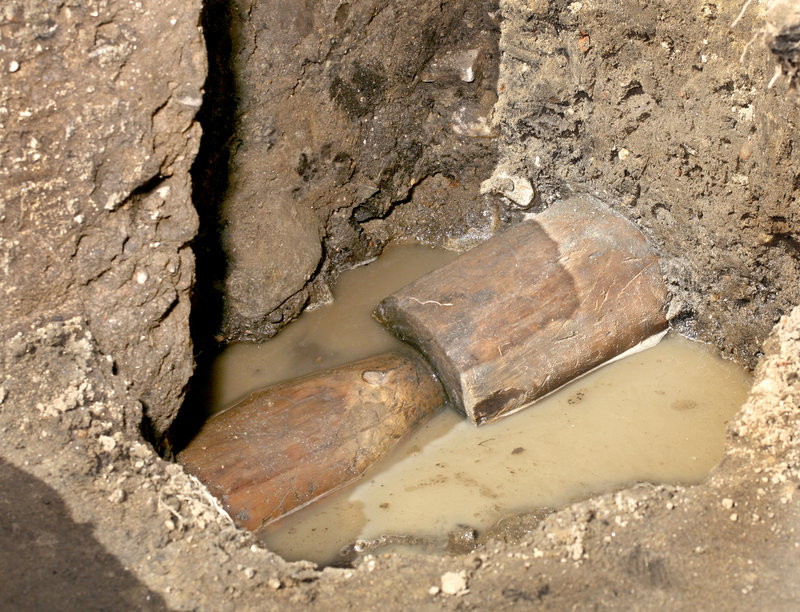PORTLAND – A wooden water pipe, discovered this week at the Abyssinian Meeting House on Newbury Street, has excited archeologists and historians who are involved in the restoration of one of the nation’s oldest black churches.
They say the pipe, intact and still carrying water, was found just a few feet underground and may have been the conduit that provided water in the 1850s to the nearby Grand Trunk Railroad station, now long gone.
The pipe also may have served nearby homes in the decade before the Great Fire of 1866, which destroyed most of downtown Portland but left the meeting house untouched. The find lends credence to the assertion that the Abyssinian was a vital community center and its members played important roles in the development of Maine’s largest city.
“That was a very dynamic time period for this community and the meeting house was at the center of it,” said Martha Pinello, lead archeologist on the restoration project.
The pipe was discovered during an archeological dig that’s part of a $100,000 drainage project, which aims to dry out the wet basement of the meeting house. The water comes from a stream that runs beneath the property and is likely fed by an underground spring in Eastern Cemetery, which is behind the meeting house and farther up Munjoy Hill.
Built in 1828, the Abyssinian is the nation’s third-oldest meeting house built by a black congregation, after churches in Boston and Nantucket. It served as a school for black children when Portland’s schools were segregated, and may have been a stop on the Underground Railroad, which helped slaves find freedom in the North.
The church closed in 1917 and was remodeled into six apartments in 1924. The city eventually claimed the run-down property for back taxes and sold it to the Committee to Restore the Abyssinian for a small fee in 1998.
It was listed on the National Register of Historic Places in 2006, the year the restoration began, and on the National Underground Railroad Network to Freedom in 2007.
Historical records show that the Abyssinian leased water to the Grand Trunk Railroad in the 1850s, Pinello said. A recent engineering study indicates that the stream beneath the meeting house still produces 5,000 to 7,000 gallons of water daily.
“Finding the pipe helps to verify everything that’s been said about this building being an important part of the community,” said Leonard Cummings Sr., head of the restoration committee.
The pipe runs alongside the meeting house toward Newbury Street, under a former street that was known as Abyssinian Way or Court before Federal Street was built in the late 1800s, Pinello said.
The pipe was fashioned from conifer logs, likely spruce or pine, that were hollowed out with an auger and coupled together by forcing the smaller end of one into the larger end of another.
For now, the water-logged pipe will be reburied to restore the anaerobic environment that has preserved it for 160 years, Pinello said. In the future, the pipe may be excavated and infused with a wax preservative so it can be displayed.
Staff Writer Kelley Bouchard can be contacted at 791-6328 or at:
kbouchard@pressherald.com
Send questions/comments to the editors.



